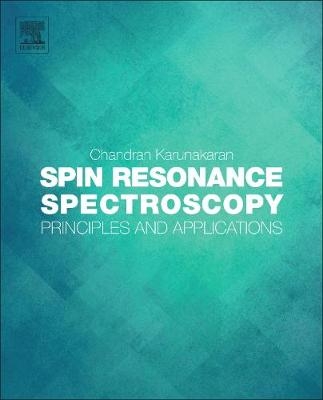
Spin Resonance Spectroscopy
Elsevier Science Publishing Co Inc (Verlag)
978-0-12-813608-9 (ISBN)
Chandran Karunakaran, PhD, is Associate Professor of Chemistry in the Biomedical Research Lab at VHNSN College, Tamilnadu, India. Dr. Karunakaran received his PhD in magnetic resonance and has worked in the National Biomedical EPR Centre and Free Radical Research Centre in Medical College of Wisconsin for the last 5 years as Postdoc, Research Scientist and Assistant Professor.
Unit 1: Principle NMR and pulsed NMR Introduction – Spin Magnetic properties – Resonance condition – Larmor Frequency – NMR instrumentation – comparison of NMR & EPR – chemical shift – spin-spin coupling – Coupling constant – first and second order spectra – simplification of complex spectra – Boltzmann Statistics – Pulsed NMR – Basic principle of FT technique – Relaxation process – Bloch equations – Relaxation times – Line shape and line width analysis
Unit 2: 1H and 13C NMR spectroscopy Interpretation of 1H NMR – assignment of signals – influence of factors on chemical shift of protons – 13C NMR – spin decoupling – double resonance – Nuclear Overhauser Effect – Off Resonance Decoupling – CIDNP – 13C assignment of signals – additivity rule – calculation of chemical shifts for aromatic and aliphatic compounds – 2D NMR –– DEPT 13C – 13C correlation COSY, HETCOR, NOE & NOSEY- multidimensional NMR
Unit 3: Applications of NMRApplications of 31P, 19F and 15N – NMR spectroscopy used in structural problem – NMR of fluxional molecules – evaluation of rate constants – solid state NMR – magic angle spinning – NMR of paramagnetic molecules – contact shifts and shift reagents – NMR imaging – contrast agents
Unit 4: EPR SpectroscopyPrinciple of EPR – instrumentation – total spin Hamiltonian – presentation of the spectrum – hyperfine splitting – super hyperfine structure – EPR of hydrogen atom – splitting in isotropic systems involving more than one nucleus – EPR spectra of free radicals in solution – methyl radical, benzene anion, p-benzosemiquinone radical anion, p- nitrobenzoate dianion and naphthalene anion – Evaluation of g and A tensors – factors affecting the magnitude of g values –– anisotropy – zero field splitting – Kramer’s theory & degeneracy – triplet EPR
Unit 5: Application and advanced EPR Application of EPR in transition metal complexes VO2+ Fe3+ Co2+ ,Mn2+, Ni2+ and bis-salicylaldimine copper (II) – Jahn-Teller theory & distortion studies in Cu(II) complexes – evaluation of spin – orbital coupling constant – exchange coupled EPR – multi resonance EPR – cw and pulsed EPR and ENDOR – MEMS and DAVIS – ESEEM – HYSCORE – ESR Spin trapping – spin labeling – EPR imaging
| Erscheinungsdatum | 19.01.2018 |
|---|---|
| Sprache | englisch |
| Maße | 152 x 229 mm |
| Gewicht | 590 g |
| Themenwelt | Medizinische Fachgebiete ► Radiologie / Bildgebende Verfahren ► Kernspintomographie (MRT) |
| Naturwissenschaften ► Chemie ► Physikalische Chemie | |
| ISBN-10 | 0-12-813608-1 / 0128136081 |
| ISBN-13 | 978-0-12-813608-9 / 9780128136089 |
| Zustand | Neuware |
| Haben Sie eine Frage zum Produkt? |
aus dem Bereich


